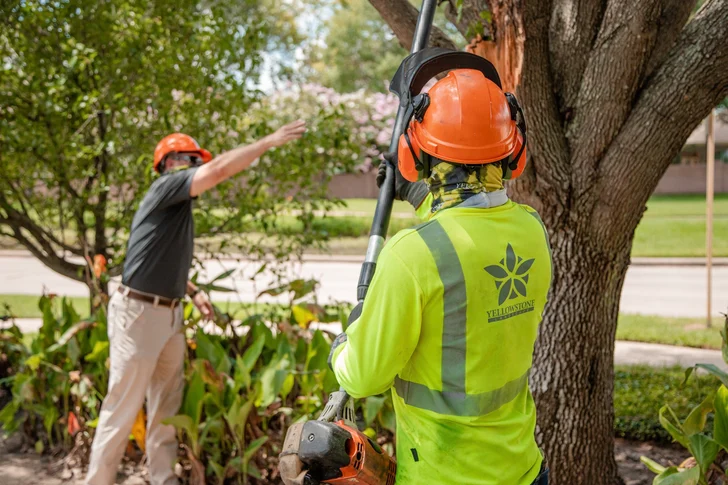Alabama’s warm climate, diverse soil conditions, and seasonal storms create an ideal environment for trees to thrive. However, trees can suffer from diseases, pests, environmental stress, and structural damage. If you suspect that a tree on your property is declining, understanding the warning signs and knowing when to take action can help prevent property damage and maintain the health of your landscape.
Signs Your Tree May Be Dying
A tree that is in distress often shows visible symptoms that indicate underlying problems. Here are some key warning signs to look out for:
1. Leaf Discoloration and Loss
- Leaves turning yellow or brown out of season
- Sparse foliage or excessive leaf drop during the growing season
- Leaves with unusual spots, holes, or curling
2. Brittle or Dead Branches
- Dead branches that snap easily
- Large sections of the tree without leaves
- Peeling or missing bark
3. Fungal Growth and Decay
- Mushrooms or fungal growth at the base of the tree
- Soft, spongy, or hollow wood
- Bark that is falling off in large patches
4. Cracks and Cavities in the Trunk
- Deep vertical cracks or splits in the bark
- Holes or cavities indicating internal decay
- Signs of insect infestation, such as sawdust around the base
5. Leaning or Unstable Structure
- Sudden leaning or tilting
- Exposed roots or soil heaving around the base
- A weak root system due to erosion or disease
Common Tree Diseases and Pests in Alabama
1. Oak Wilt
- A fungal disease that affects oak trees, causing wilting, leaf discoloration, and rapid decline.
2. Pine Beetles
- Small insects that burrow into pine trees, leading to browning needles and tree death.
3. Anthracnose
- A fungal disease affecting hardwood trees like maples and dogwoods, causing leaf spots and premature leaf drop.
4. Root Rot
- A soilborne disease that causes root decay and weakens the tree’s structural integrity.
Can a Dying Tree Be Saved?
In some cases, a tree showing signs of distress can be saved with proper care. Here are some steps to consider:
- Pruning: Removing dead or diseased branches can promote new growth.
- Soil Improvement: Aerating compacted soil and adding mulch can enhance root health.
- Pest Management: Treating insect infestations early with appropriate insecticides or biological controls.
- Fertilization: Providing nutrients can help trees recover from stress and disease.
- Proper Watering: Ensuring the tree receives adequate but not excessive water.
Consulting with a certified arborist can provide a professional assessment and determine whether treatment is possible.
When to Remove a Tree
Unfortunately, some trees cannot be saved and pose risks to property and people. Here are situations where tree removal is necessary:
1. The Tree is Dead
A completely dead tree can become brittle and hazardous, making removal the safest option.
2. The Tree is a Safety Hazard
- Significant leaning towards a structure or power lines
- Large, dead branches at risk of falling
- Root damage compromising stability
3. The Tree is Severely Diseased
If a tree is infected with an incurable disease, removal can prevent the spread to other trees.
4. The Tree is Damaging Property
- Roots causing foundation or sidewalk damage
- Branches interfering with roofs, gutters, or power lines
5. The Tree Has Been Severely Storm-Damaged
Alabama’s frequent storms can cause irreparable damage. If over 50% of the tree is damaged, removal may be necessary.
Hiring a Professional for Tree Assessment and Removal
If you’re unsure whether your tree needs to be treated or removed, it’s best to consult a professional arborist. A qualified expert can:
- Diagnose tree health problems
- Recommend treatments or safe removal
- Ensure proper disposal and stump grinding
Final Thoughts
Trees enhance the beauty of Alabama landscapes and provide numerous environmental benefits. Regularly monitoring tree health and addressing problems early can extend the life of your trees. However, when a tree becomes a safety hazard, removal is sometimes the best course of action.
If you have concerns about a tree on your property, consider reaching out to a local arborist for a thorough evaluation. Keeping your trees healthy ensures a safer and more beautiful outdoor space for years to come.
